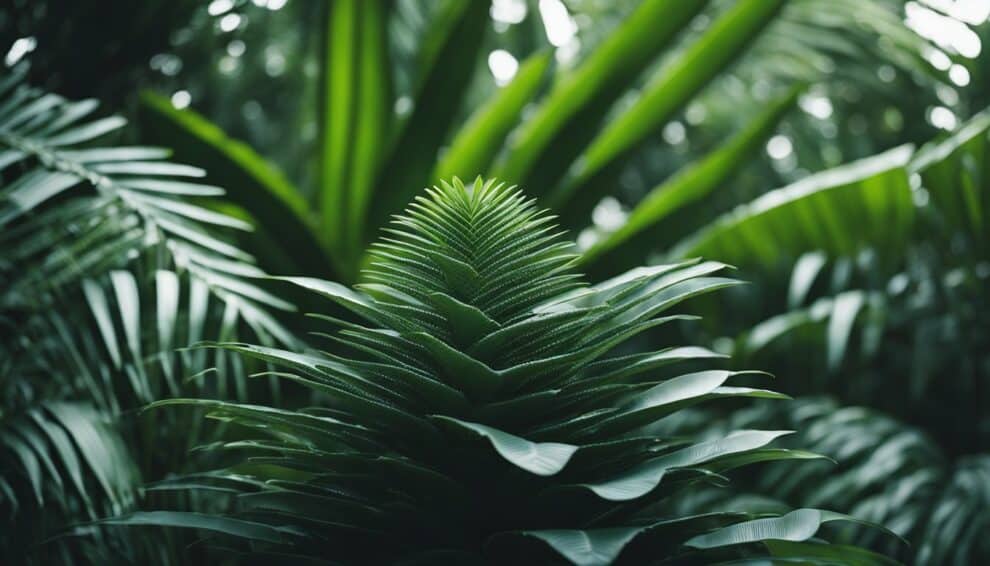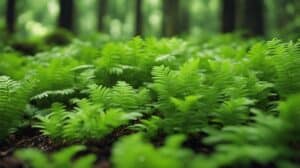Cycads, also known as living fossils, are ancient plants that have been around for over 300 million years.
These plants are often considered as a collector’s item due to their unique appearance and rarity.
Cycads are slow-growing, long-lived plants that can be propagated through various methods.
In this article, we will explore the different ways to propagate cycads and how to care for them in the modern garden.

Cycads are popular among garden enthusiasts due to their exotic appearance and ability to add a prehistoric touch to any landscape design.
While cycads are native to tropical and subtropical regions, they can be grown in a variety of climates with proper care.
Propagating cycads can be done through several methods, including seeds, offsets, and tissue culture.
Each method has its own advantages and disadvantages, and the choice of propagation method depends on the species of cycad and the desired outcome.
Propagation of cycads can be a rewarding experience for gardeners who want to expand their collection or preserve rare species.
Cycads have been around for millions of years and are known for their resilience and longevity.
With proper care and attention, these ancient plants can thrive in the modern garden and continue to be enjoyed for generations to come.
Understanding Cycads

Cycads are ancient plants that have been around for over 300 million years.
They are gymnosperms, which means they reproduce by using seeds that are not enclosed in a fruit.
Cycads are often referred to as “living fossils” because they are some of the oldest plants in the world that have survived to this day.
History and Evolution
Cycads were once a dominant species during the Mesozoic era, which was about 250 million years ago.
They were found all over the world, from the Arctic to the tropics.
However, they started to decline in numbers during the Cretaceous period, which was about 70 million years ago.
Today, they are found in tropical and subtropical regions around the world.
Species Diversity
There are about 300 species of cycads, and they come in a variety of shapes and sizes.
Some species are small and grow only a few feet tall, while others can grow up to 60 feet tall.
They also come in a range of colors, from green to blue to silver.
Cycad Habitats
Cycads are found in a variety of habitats, including rainforests, deserts, and coastal areas. They prefer well-draining soil and lots of sunlight.
Some species are adapted to grow in rocky areas, while others can grow in sandy soil.
In conclusion, understanding cycads is important for anyone who wants to grow these ancient plants in their garden.
By learning about their history, evolution, species diversity, and habitats, gardeners can create the ideal growing conditions for their cycads.
Propagation Techniques
Cycads are ancient plants that have been around for millions of years.
They are popular among gardeners due to their unique appearance and low maintenance requirements.
Propagation is an important aspect of cycad cultivation, and there are several techniques that can be used to propagate these plants.
Seed Propagation
Seed propagation is the most common method of propagating cycads.
The seeds are collected from the female cones and then cleaned and planted in a well-draining soil mix.
It is important to plant the seeds as soon as possible after collection to ensure their viability.
Cycad seeds can take anywhere from several months to several years to germinate, depending on the species.
Once the seeds have germinated, they should be transplanted into individual containers and grown until they are large enough to be planted in the garden.
Offset Division
Offset division is another method of propagating cycads.
This technique involves separating the offsets, or small plants that grow at the base of the mother plant, and planting them in individual containers or directly in the garden.
To propagate cycads using offset division, the offsets should be removed from the mother plant using a sharp knife or saw.
The cut should be made as close to the base of the offset as possible to avoid damaging the mother plant.
The offset should then be planted in a well-draining soil mix and watered regularly until it establishes itself.
Micropropagation
Micropropagation, also known as tissue culture, is a more advanced method of propagating cycads.
This technique involves taking a small piece of tissue from the mother plant and growing it in a sterile laboratory environment.
Micropropagation is a useful technique for propagating rare or endangered species of cycads, as it allows for the production of large numbers of plants in a short period of time.
However, it is a complex and expensive process that requires specialized equipment and expertise.
In conclusion, there are several techniques that can be used to propagate cycads, including seed propagation, offset division, and micropropagation.
Each method has its own advantages and disadvantages, and the choice of technique will depend on the specific needs and goals of the gardener.
Caring for Young Cycads

Cycads are ancient plants that have survived for millions of years. They are a great addition to any modern garden and are relatively easy to care for.
Here are some tips for caring for young cycads.
Soil and Potting
Cycads prefer well-draining soil that is rich in organic matter. A good potting mix for cycads should contain equal parts of sand, perlite, and peat moss.
When potting young cycads, it is important to use a pot that is only slightly larger than the root ball.
This will prevent the soil from staying too wet, which can cause root rot.
Watering and Fertilization
Young cycads require regular watering, but it is important not to overwater them. The soil should be allowed to dry out slightly between waterings.
Cycads are sensitive to salt buildup, so it is important to use a fertilizer that is low in salts.
A balanced fertilizer, such as a 10-10-10, can be applied every two to three months during the growing season.
Sunlight and Temperature Requirements
Cycads prefer bright, indirect sunlight. Young cycads should be protected from direct sunlight, which can scorch their leaves.
They also prefer warm temperatures, between 65 and 85 degrees Fahrenheit. In colder climates, young cycads can be grown indoors near a sunny window.
By following these tips for caring for young cycads, gardeners can enjoy these ancient plants in their modern gardens.
Challenges in Cycad Propagation

Pest and Disease Management
One of the biggest challenges in cycad propagation is managing pests and diseases.
Cycads are susceptible to a variety of pests, including scale insects, mealybugs, and spider mites.
These pests can cause significant damage to the plants, leading to stunted growth and even death.
To prevent infestations, growers must maintain a clean and healthy growing environment.
This includes regularly inspecting plants for signs of pests and diseases, removing any infected or damaged leaves, and using insecticides and fungicides as needed.
Legal and Ethical Considerations
Another challenge in cycad propagation is navigating the legal and ethical considerations surrounding the trade of these ancient plants.
Many species of cycads are protected under international and national laws due to their rarity and threatened status in the wild.
As a result, growers must obtain proper permits and follow strict regulations when buying, selling, and propagating cycads.
Additionally, they must ensure that they are not contributing to the illegal trade of these plants, which can have devastating effects on wild populations.
Overall, successful cycad propagation requires careful attention to both practical and ethical concerns.
By taking the necessary steps to manage pests and diseases and adhere to legal and ethical guidelines, growers can help ensure the continued survival and success of these fascinating plants in the modern garden.
Frequently Asked Questions

What methods are used to propagate cycads effectively?
Cycads can be propagated through various methods, including division, offsets, and seeds.
Division involves separating the plant into smaller sections, while offsets are new plants that grow from the base of the parent plant.
Seeds can also be used to propagate cycads, but they require more patience and care.
Can you grow cycads from seeds, and if so, how?
Yes, cycads can be grown from seeds. However, it is important to note that cycad seeds have a hard outer layer that must be removed before planting.
This process is called scarification and can be done by soaking the seeds in hot water or by manually removing the outer layer with sandpaper.
Once scarified, the seeds can be planted in a well-draining soil mix and kept moist until they germinate.
What is the typical habitat for cycads in the wild?
Cycads are native to tropical and subtropical regions around the world, including Africa, Asia, and the Americas.
They can be found in a variety of habitats, including forests, savannas, and deserts.
Some species are adapted to grow in rocky or sandy soils, while others prefer moist, well-draining soils.
Why are cycads often referred to as living fossils?
Cycads are often referred to as living fossils because they have been around for over 300 million years and have changed very little over time.
They are considered to be one of the oldest groups of plants on earth and are often compared to dinosaurs in terms of their longevity and resilience.
How often do cycads produce new foliage, and what care is required?
Cycads produce new foliage slowly, typically only one or two leaves per year.
They require well-draining soil, regular watering, and occasional fertilization to thrive.
It is also important to protect them from extreme temperatures and direct sunlight, as they are sensitive to both.
What are the distinguishing features of different cycad species?
Different cycad species can be distinguished by their leaf shape, size, and texture, as well as the shape and color of their cones.
Some species have spiky leaves, while others have softer, more rounded leaves.
Some species are also more tolerant of cold temperatures, while others prefer warmer climates.













